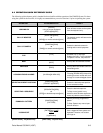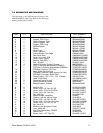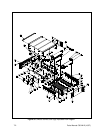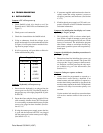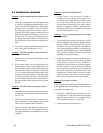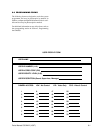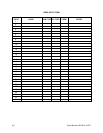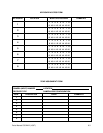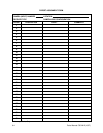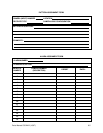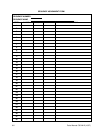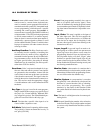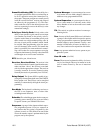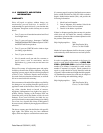10-2 Pelco Manual C501M-B (10/97)
Preset Positioning (PP), This is the ability for a
so equipped pan/tilt unit and its associated lens to
be set to a particular scene, then “memorized” by
the system. The preset positions are actually stored
in the PP version Coaxitron
®
receiver and assigned
an address by the programmer (1-32). The trans-
mitter sends the code for the desired preset to the
receiver, requesting it to move the device(s) to the
memorized setting(s).
Priority or Priority Code, Priority refers to the
ability of one operator to gain control over an input
over another user based on the priority code as-
signed to each of them. A low number priority code
takes control over a high number priority code. In
the case of equal priority numbers (which should
be avoided when programming users) the opera-
tors will alternately share control. This means that
there is a possibility for some confusion in control-
ling a device that two or more operators are trying
to operate simultaneously. Priority codes should be
well thought out to avoid control confusion.
PTZ, Stands for pan, tilt and zoom.
Receiver, Receiver/Driver, The receiver is the
device that decodes the control signal from the trans-
mitter and then “drives” the device(s) associated
with it with the appropriate voltages. The receiver
is usually located at or near the camera location.
Normally the receiver is powered by local 120 VAC.
Relay Output, The System 8500 is capable of pro-
viding relay closures through the use of the CM8532
Relay output card. These relays can be energized
manually or automatically through the alarm pro-
gramming.
Run Mode, The keyboard is addressing receivers or
the CPU to run sequences, tours, or other video
switching/control functions.
Schedule, The scheduling program ties the event pro-
gramming (tours running by day types and times)
to specific current year calendar-based dates.
Sequence, A group of video inputs and their respec-
tive programmed presets (if any) to sequence on
any monitor that the system is requested (by the
operator) to run it on. This differs from tour in that
in tour the monitor output is predetermined by the
program, not by the operator.
System Manager, A system manager has access
to all menus and can make changes, deletions or
additions to any programmable fields.
System Supervisor, A system supervisor has ac-
cess to some menus in a look-only mode, which
allows him/her to look at the menu but not make
any changes.
Tilt, The vertical, or up/down motion of a remote po-
sitioning device.
Tour, In terms of the System 8500 a tour is defined as
a group of video inputs and their respective presets
(if any) programmed to sequence to predetermined
monitor output(s) upon command. Usually a tour
monitor is locked out to all users (see Monitor, sys-
tem). Tours can be used in conjunction with alarms.
User, Any operator authorized to use, operate or pro-
gram the system.
User ID code, (See PIN)
Zoom, The term used to denote the ability of a lens to
vary its focal length. This may be manual or in the
case of remote control by the use of motorized
lenses.



